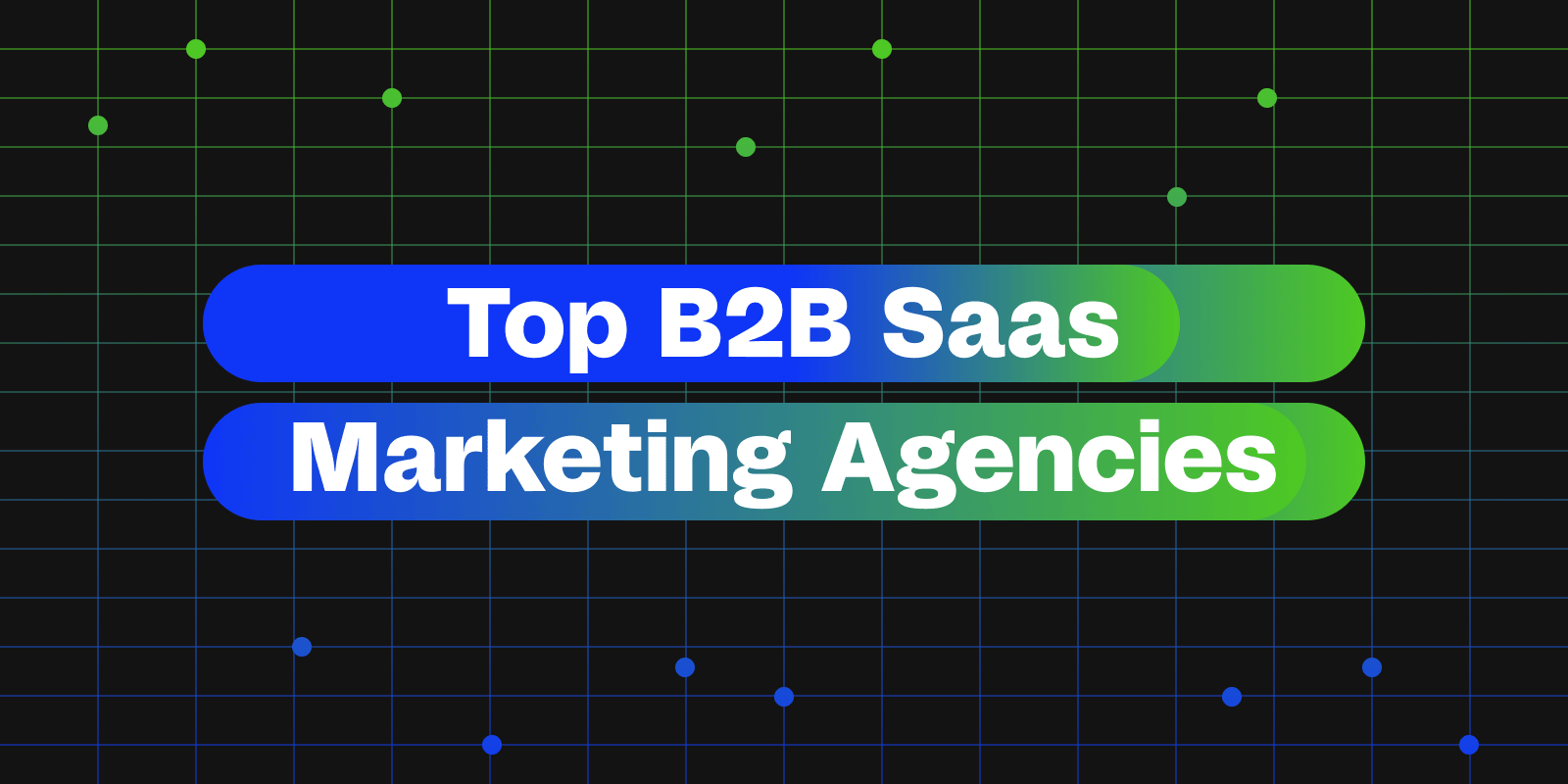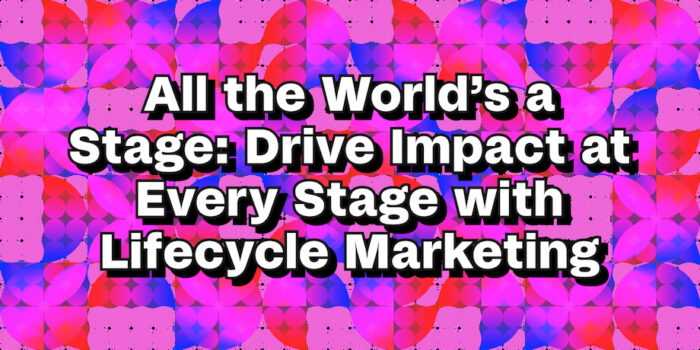Building a brand is a process that is full of peril and uncertainty, particularly when determining the best strategy for growth with so many options available. Making the decision as to whether to lead your growth strategy with a focus on product, content, or community, is a decision that can make or break a business, even before it starts, and yet there’s no clear formula for making the choice.
While true that all strategies will have components of each of the 3 elements present in them by nature of modern best practices requiring a content strategy, a community, and ideally a product, in order to operate and grow a brand, it’s also true that one of the 3 tends to take priority over the others. This isn’t to say that a brand focusing on community has an insignificant product; quite the opposite, it’s likely that any robust community is forming around a robust product — though the community, in this case, is a lever to support the growth of the product.
Confused? It’s less complicated than it may sound. We’ve gone ahead and broken down a quick growth stack for each sequencing of product, community, and content in order to illustrate the interconnectivity of these growth levers. In doing so, we are able to offer simple infrastructures for businesses of any type to be able to refer to and apply to their own marketing stacks as they determine their pathways to growth.
But first, let’s get a quick crash course in each of the individual approaches to better understand them individually before we look at how they play together.
Community-led growth
Advocacy and social validation are at the core of growth in the modern marketplace of accountability and trust. For businesses looking to leverage these things to boost their business, there’s a certain level of grassroots effort that’s necessary. In the same way that politicians go around shaking hands and kissing proverbial babies, for community-led growth businesses have to be out on the streets of the internet, chatting with folks, interacting with other brands, and building relationships.
These relationships become the backbone of the growth of the business as the relationships are the foundation of advocacy – and by extension conversions. By engaging with communities, brands have direct insights into the pain points and motivations of their audience, which they can then apply to their business, which then encourages them to invite others to the community. The loop expands with the addition of new community members, who then provide new insights, and so the growth cycle continues – potentially exponentially, depending on the product or brand offering.
Product-led growth
Building growth as a mechanism of your product can be tricky, particularly in the early stages of development since you need users to build users – we’ll get to that in a bit. Ultimately, the goal for a growth strategy driven by your product is to lessen the friction between users trying your product and then immediately proving your value.
While this is typically seen in the wild with promo codes and referral programs, newer models have become significantly savvier by focusing on giving product away, sometimes permanently, and building features behind paywalls.
Content-led growth
Content is queen and organic discovery is, while competitive, a supreme approach to not only growth but advocacy. By understanding users, their interests, needs, and knowledge gaps, content strategies can be custom-built to serve users who are actively seeking out information about your brand offering, or even the brand itself, allowing first touch points to be made further down the funnel.
In our trust-based economy, building authority for the subject matter as it directly relates to your industry or product is paramount to success. By building your content strategy around those topics brands are able to position themselves in a way that quickly builds trust by becoming the voice of authority for their industry or vertical.
The breakdowns
Now that we’ve covered the foundations of the three main growth strategies, we can help to frame them better as they stack with each other. While one of the three will act as the foundation of the overall strategy, the other two act as support mechanisms for purposes of lead generation, or otherwise moving users down the funnel.
Ultimately, the three in tandem work as the top, middle, and bottom of the funnel with the main component of the strategy acting as lead generation, the middle as a way to warm the lead, and then finally the bottom as the conversion mechanism. Thinking of these components in these terms allows a simple framework to not only build a strategy off of but to keep top of mind as the strategy is executed to ensure each part of the process is being leveraged properly.
Since we’ve already discussed the top-of-funnel mechanisms of each of these strategies, we’ll focus primarily on the middle and bottom-funnel.
Community – content – product
Content – Middle-funnel
Content as a main support for building community is possibly the most common strategy in the modern marketing landscape. This isn’t surprising considering the two go hand-in-hand so organically and help to drive users to engage with brands, each other, and inevitably the product.
If we were to look at the funnel through the lens of the user journey, we can establish already that they’ve engaged in the community in some way, whether through social channels, dark-social channels, or brand advocates. Through these community interactions, they’ve grown to understand the brand, become familiar with the offering to a degree, and are otherwise primed for the next step in their journey.
Through community engagement, if the next step of the journey is to drive users to your website or social channels, then content then becomes the supporting mechanism for those users to continue to nurture their progress through to conversion.
As opposed to the stacks where content is the lead mechanism for discovery, as a supporting mechanism the focus of the content for this model should focus primarily on answering questions, informing users of the benefits of the brand, and otherwise building upon the work that the community has already begun nurturing.
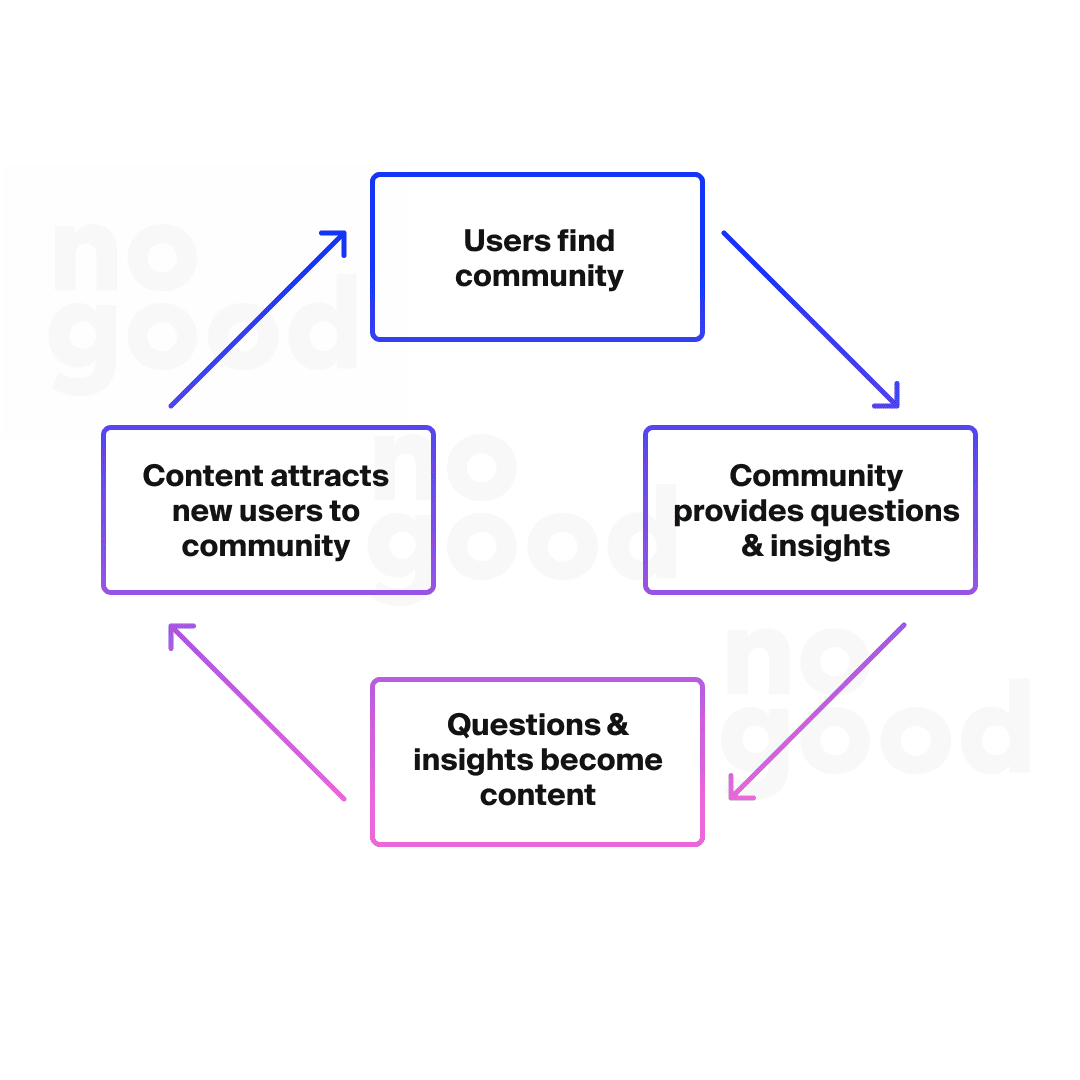
The beauty of having content in a direct supporting role to the community is that not only can you leverage content directly from advocates in the form of UGC to use in your content strategy, immediately bridging the gap between the two, but also use the insights from the community itself to form your content strategy. By engaging with users, building relationships with creators, and supporting the community aspect of your initial strategy, you can make absolutely sure that the answers users are looking for, pain points they’re experiencing, and other forms of concerns and preferences are accounted for in your content to help drive them on through to…
Product – Bottom-Funnel
In the same way that we leveraged community to inform content, we’ll be doing the same with both content and community to help refine product and build conversion opportunities once users have reached the product stage of your growth strategy.
By prioritizing community and content, the same feedback, interactions, and insights can help to shape our conversion strategies at the product level. If our insights and social listening have told us that users find competitor products or services too expensive, or that they find it hard to commit to a new product without first testing it, then we can shape our product offering directly to this feedback in order to ensure that once users reach the product, our conversion journey is catered directly to them.
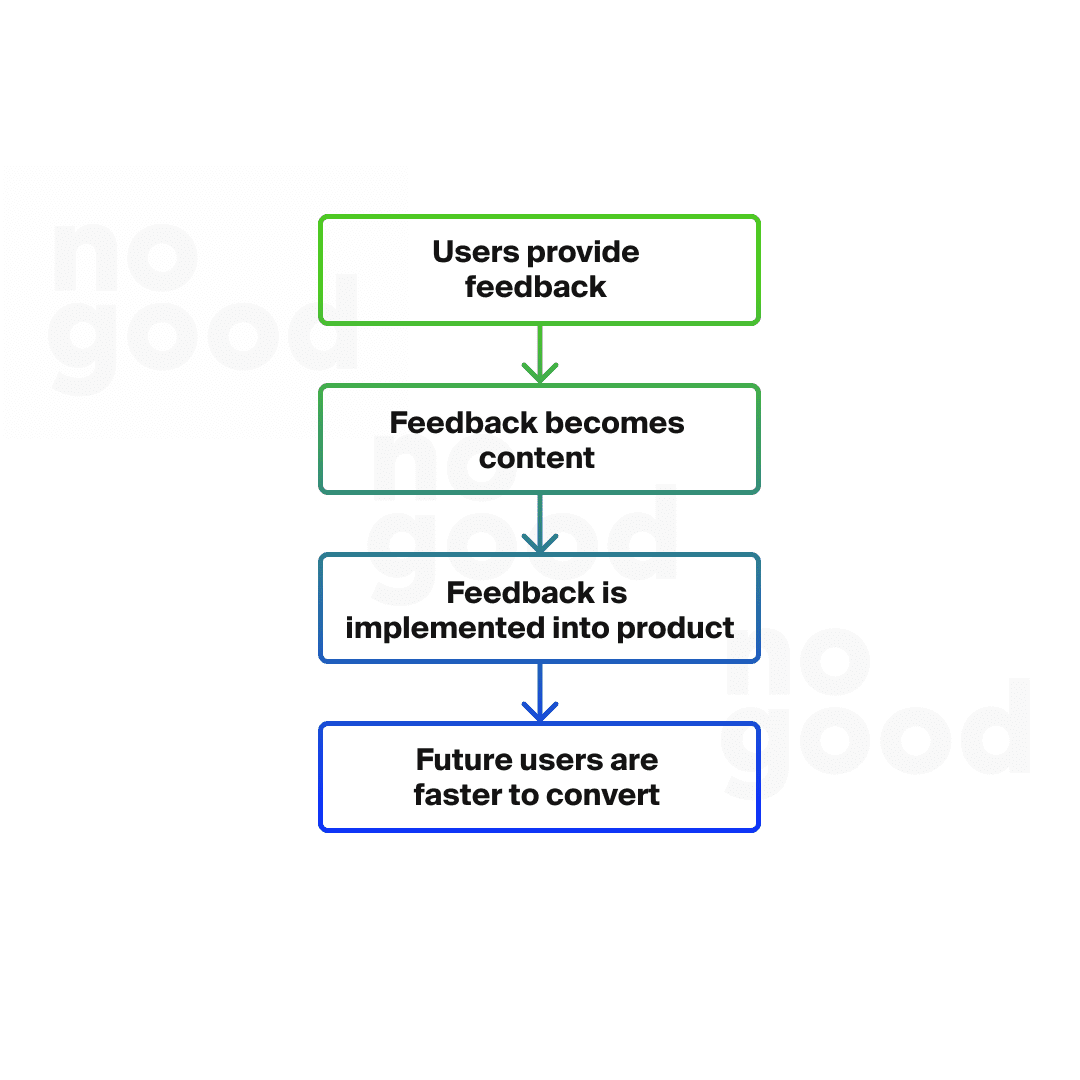
Similarly, we can close the loop on the process by using the same feedback and insights to optimize the product itself. While many see conversion as the end of the funnel, the reality is that the funnel will ideally continue with advocacy from users that we’ve converted. By taking user feedback, and directly implementing it into our product offering, we are likely to not only retain users but convert them into advocates, which feeds directly back to the community at the top of this particular funnel.
Community – product – content
Product – Middle-funnel
Once again, we’re beginning with a community in place and using product to move users down-funnel to content as a mechanism for conversion. While this may seem like it’s a bit backward since, well, we already have users using the product — isn’t that enough? Not necessarily.
As we witnessed with product closing the loop in the previous iteration of our strategy, the same will be true for this and all subsequent iterations. Product, in this case, is still being used to convert users, but also to help move them through to content to then feedback through to the community to start the cycle and nurture growth.
For this particular orientation, we have a robust community in place that is sharing in the process of educating the users about our product and advocating for others to use it themselves. Naturally, this is an incredibly fertile ecosystem for reward systems to help not only encourage users from the community to advocate and drive new users to sign up, join, or buy, but also to say thank you for helping to build this wonderful thing we’re developing together.
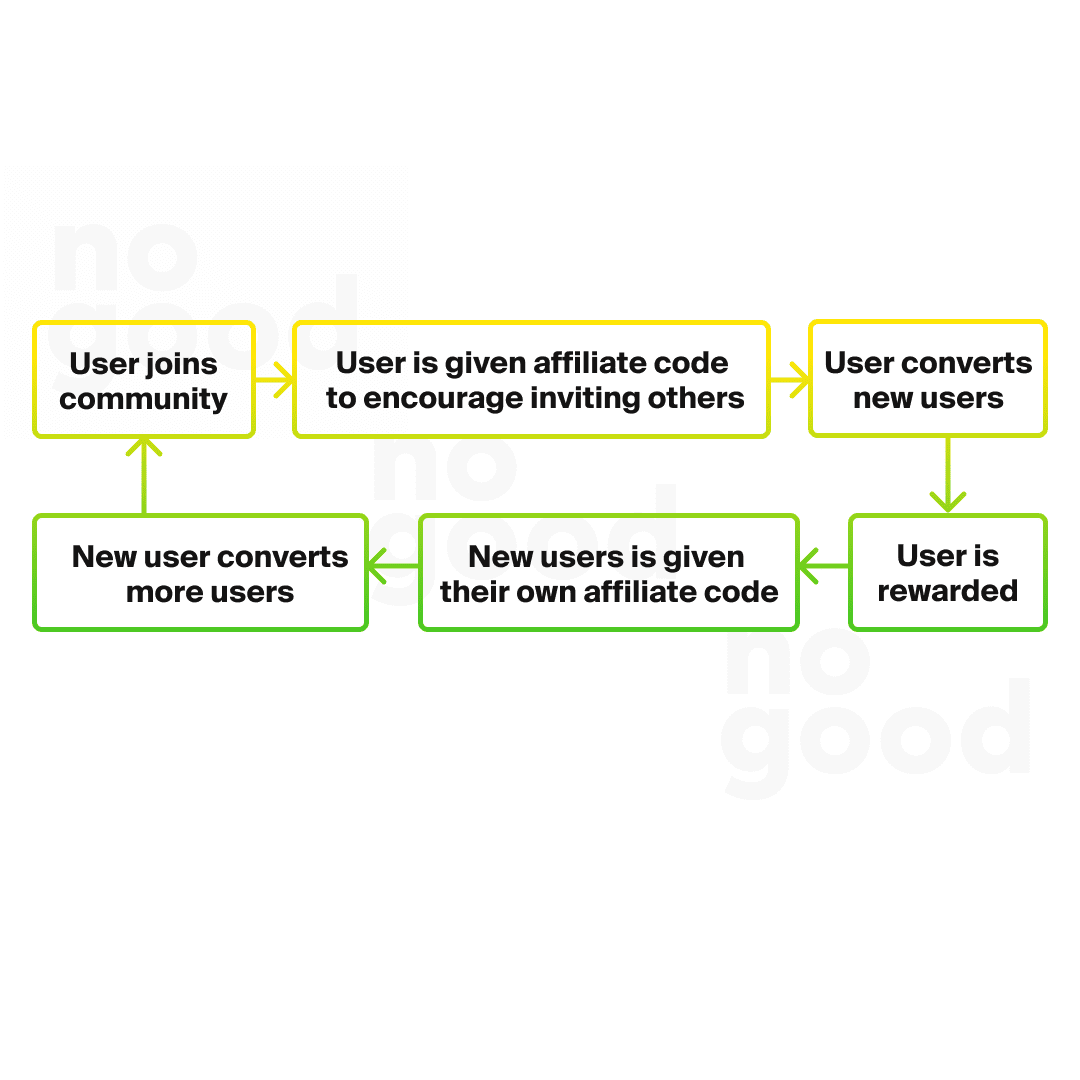
Brands ranging from Lyft to Airbnb have leveraged this stack in order to achieve remarkable growth. While it does require a bit of up-front capital to execute since, well, you’ll be giving credit or cash to both the referrer and the referee, if being leveraged with a truly dedicated community the return can be fantastic.
Despite being a few years late to the party that Uber had started with quite the bang, Lyft arrived on the scene and was giving away free rides to not only users but their friends that they got to sign up. Not surprisingly, users were eager to see what the competition had to offer and was happy to share with their communities after seeing that the service was comparable, if not identical to Uber.
Beyond just free product giveaways, gamification can be introduced to the process to then encourage…
Content – Bottom-funnel
You’ve built a robust community and have them converting and advocating for you through the robust reward program that you’ve built into your product. But how do you then get new users who may not be positioned to utilize your rewards program to partake in the community through content?
While brands like Figma & Notion have the distinct advantage of having products that are specifically for creating things that can easily be shared as content, not every brand is so lucky. Thankfully, gamification is a technique that most brands can leverage in this type of growth stack in order to get users involved, and most importantly, create content.
This serves two purposes. The first naturally is conversions. As we follow users on their journey from community, where they are educated on the product and given the referral code to bring them on through to product, gamifying the process makes the process sticky and converts users from freemium-bouncers to paid subscribers. Secondly, by sharing UGC with their own communities in order to flex their achievements through the gamification system, they then begin a new loop to help keep the growth cycle going — this time without referral bonuses.
Content – community – product
Community – Middle-funnel
Content and community tend to form something of a chicken or the egg relationship in many instances for brands. This is particularly true in the age of content creators and their impact on community development as brands must not align themselves with niche communities in order to build trust. While this initially took the form of collaborating with external content creators in order to reach their immediate communities, brands are beginning to adopt and align themselves with internal creators to represent the brands themselves.
In the case of community as a direct support mechanism to a content-led strategy, the creators act as the discovery lever through any number of ways — organic search, social media discovery, etc. Upon discovery, the user will find themselves among a robust and supportive community of people who are not only welcoming but actively advocating for the brand as they’ve likely cycled through the loop themselves already.
This user journey shines a light on the importance of engagement in regard to content with community as an extension — and why the two work so closely together in many cases. The community aspect of having comments, shares, and engagement for content acts directly as a tool for social validation and an opportunity for users discovering content to also move more quickly down-funnel by feeling as though they’re a part of something.
If we were to look at two user journeys we’ll see how the same experience can have drastically different outcomes:
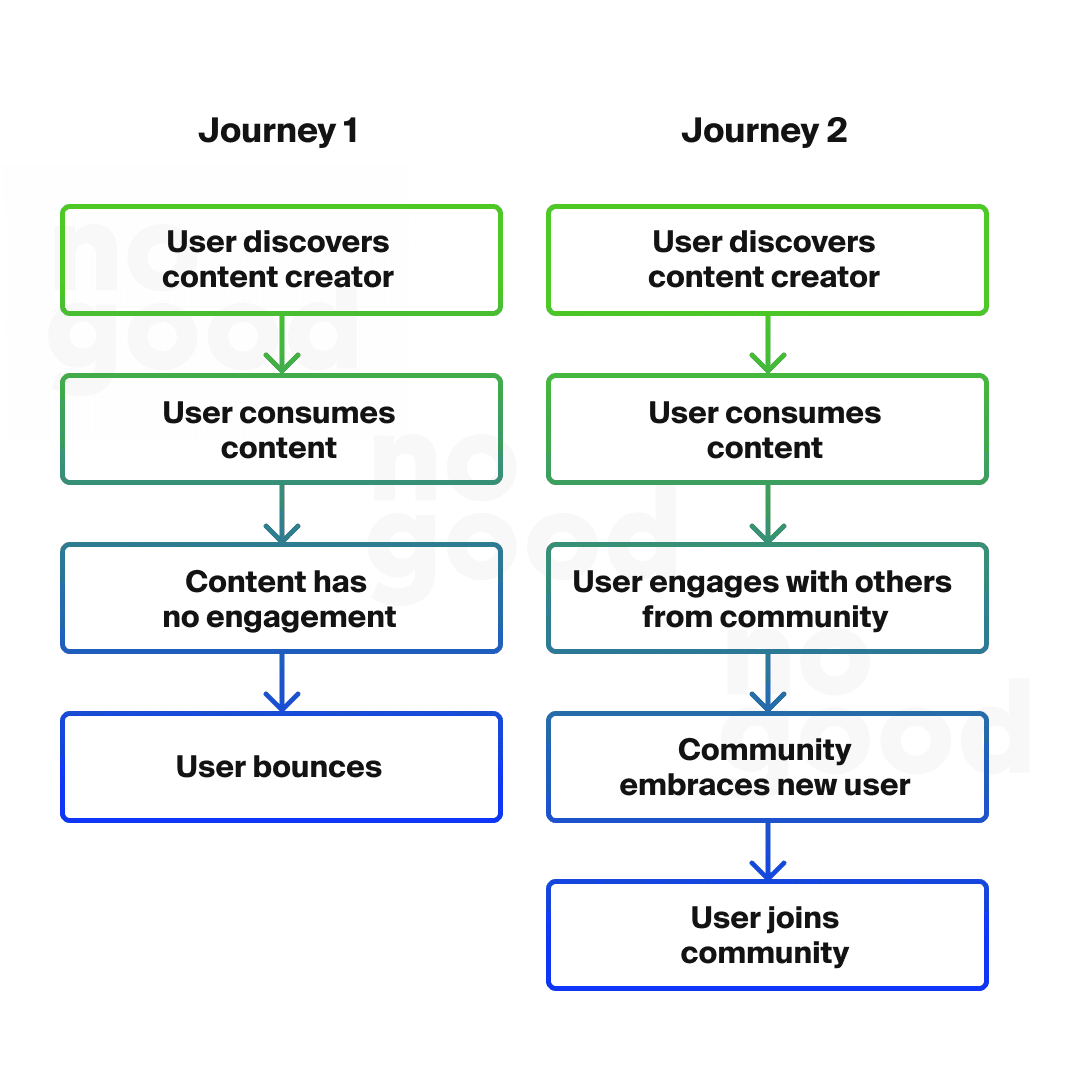
As we can witness in journey 2, community engagement as an extension of content can, and often is, a deciding factor in a user journey and moving beyond discovery. By socially validating a user’s journey towards conversion, the user themselves feels validated and is quickly moved on to the product leg of the journey.
Product – Bottom-funnel
Product as a bottom-funnel conversion method for a community-led strategy can often take a bit of a different shape than the traditional referral code or affiliate-driven strategies we’ve previously discussed — though there are admittedly a number of similarities.
Ultimately, the goal for product-led conversions is to get users to, well, convert. But in this particular instance, we have a robust community that is working in tandem with our content-focused strategy; something we can use to our advantage.
While gatekeeping can often be a fairly discouraging emotion in marketing, in this instance it can be incredibly compelling. It may seem counterintuitive to not allow people to use your product or service or to limit those who have access to it when typically the goal for any new venture is to drive as many conversions as possible, but as the pies de resistance of this particular stack, it can be incredibly effective.
By locking the offering behind the community itself, particularly in an instance where the community is the secondary driver supporting the content discovery system, it creates an allure that is irresistible to users once they’ve been driven down the funnel. Allowing users to make the decision as to who gets in, and who doesn’t, not only creates a sense of ownership and empowerment within the community, but pride for the product offering or brand, and responsibility as an extension of advocacy.
This was put beautifully displayed recently when Pinterest launched their new Shuffles feature which was, you guessed it, invite-only. Almost as immediately as it had been announced, communities across Pinterest, Reddit, Instagram, and all forms of other social media were buzzing with people clamoring over invite codes. And, just like in the early days of Gmail, as soon as someone got their hands on an invite they were just as eager to use it as they were to brag to their friends and toss a pittance to their friends.
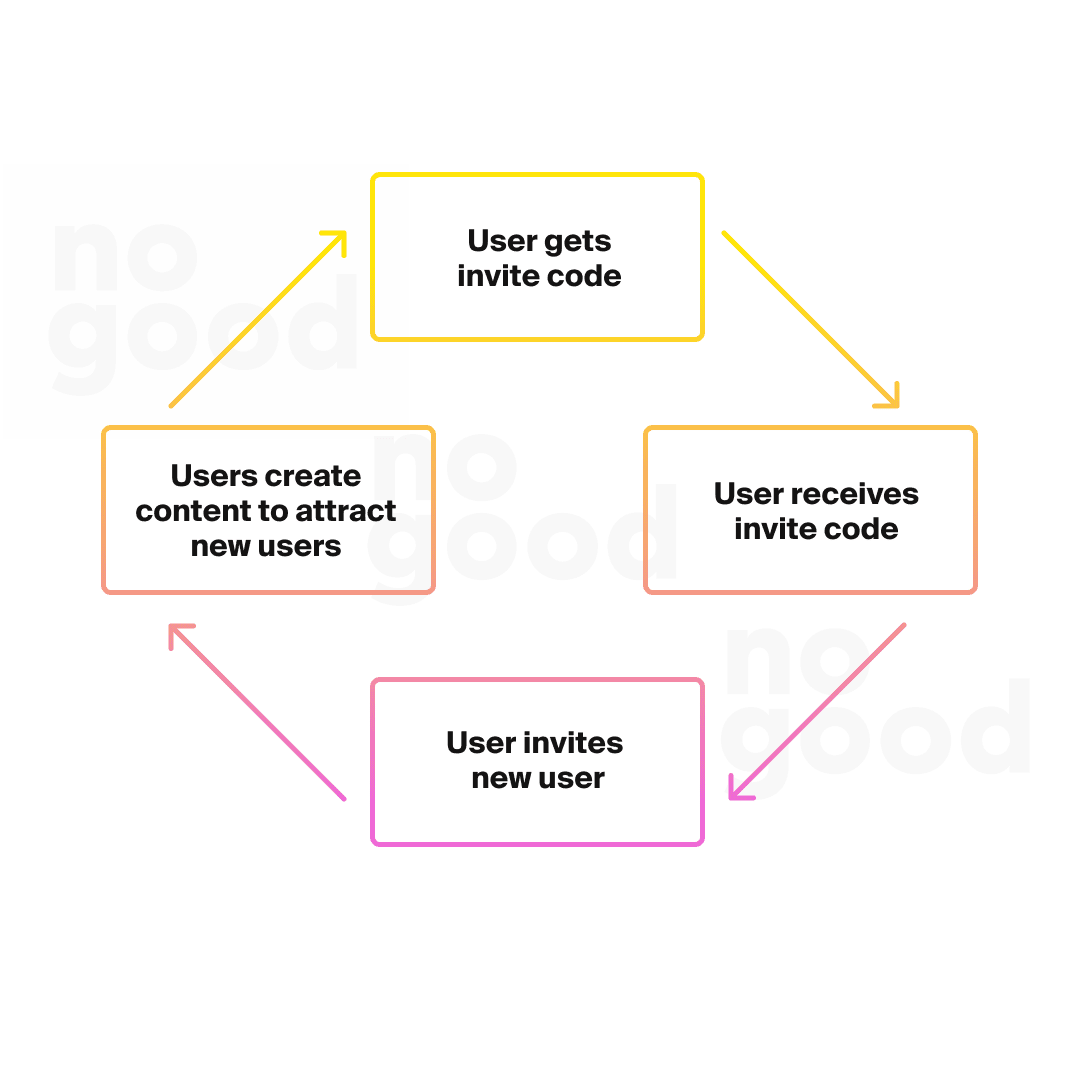
Closing the loop once again, by turning new users into advocates, there creates a sense of duty for those who finally get that highly sought-after invite to return to the top-of-funnel to the content that brought them into the loop to begin with and contribute themselves by engaging.
Content – product – community
Product – Middle-funnel
Product as a support for content can be tricky, as it faces the difficulties of not having the previously mentioned benefit of having the social validation support that the community lends to the process. That’s not to say that it’s an impossibility, or that there aren’t instances where it’s the best stack to go with — it’s just different.
The instances where this particular stack does tend to thrive is when the content being offered takes the form of a free asset or add-on or something that compliments the product itself. This is because the offering to convert coming earlier in the stack acts as the social validation itself.
If, for instance, our content were a tutorial about how to perform a particular task, but the ask is that the user tries the tool or product we’re looking to convert on. The content then has an offer of a free download or trial of a paired down or limited version of the product we’re looking to convert on — giving the user enough to understand the product, but not enough to fully experience the full functionality or benefit.
This product offering is likely enough to warm users enough to get them to sign on for the partial commitment, but also not likely enough to lead them to a full conversion.
That is, not without the support of the community.
Community – Bottom-funnel
For this stack, social validation comes two-fold — once with the product offering in the previous step, and then again further down the funnel from the community.
As mentioned, the product offering gives users a taste of what it is that the brand offers after being educated by the content and warmed a bit in the process. However, there still needs to be that solid push to conversion to ensure that warm leads don’t cool too quickly and conversions don’t get lost in the process.
Community, in this case, acts as the supporting mechanism to help drive users from the initial taste that they were given, and on through to the full commitment.
On this journey, once the users have had a taste they are likely to seek out to see whether or not they should take the plunge for the full product – and what better way for that to happen than through the support of the community? Users seeking validation will likely set out on their own to find accounts and experiences from others who, similar to them, were at one point faced with the decision of whether or not to convert.
When seeking these answers, ideally these users will be faced with accounts of those who did, in fact, convert and are singing the praises and sharing their positive experiences.
These accounts and experiences become the lynchpin to converting users into new members of the community as they throw their full support behind the product. And, similar to the other iterations of these stacks, they are likely to once again close the loop by sharing their own experiences for future users to use as their validation as they follow the same paths.
This is likely best reflected by the free-to-play model that has been prevalent in online gaming in recent years, particularly with mammoth games like Fortnite, Fall Guys, Rocket League, and other live service games. While these games may span various genres, the thing they have in common is that they’re all free(ish) and all have incredibly robust communities behind them.
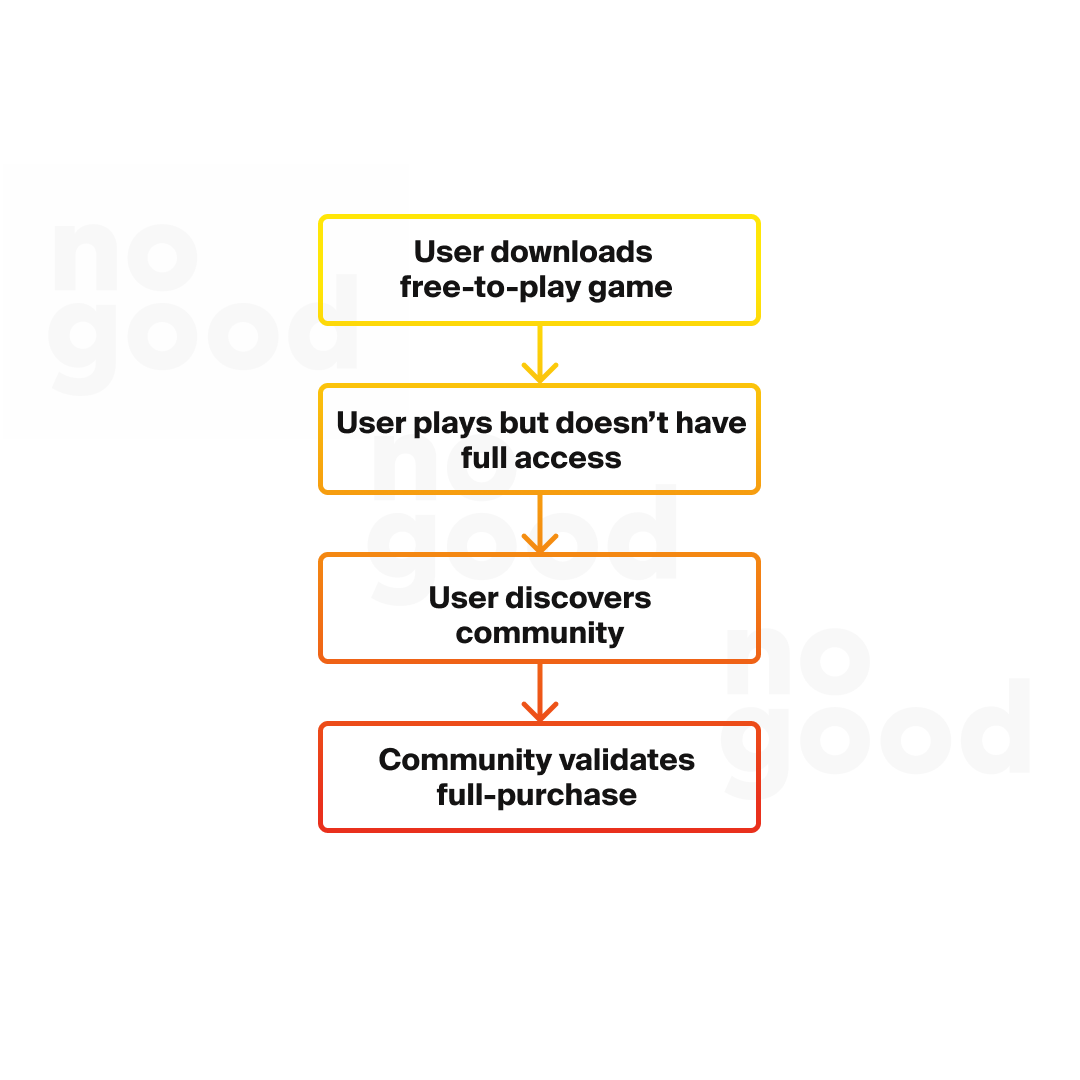
Initially, users are enticed to download the game to try it for free, often with features or game modes locked behind a paywall. Upon discovering that they enjoy the game, they seek out the community to validate their desire to purchase. Upon discovery of the community, they are driven through to purchase — often with new seasons requiring repeat purchases periodically throughout the year.
Product-led growth
Product as the lead mechanism for growth can be incredibly challenging as there is often an immediate ask for what would otherwise be a cold lead for the brand. This is, in particular, a major factor in why product-led growth strategies often rely so heavily on an offer to warm users and get them on their platform.
We’ve since this become particularly true as brands and marketers prepare for the shift to what may eventually become a cookieless future and become more and more reliant upon zero-party data.
With the inundation that many users experience with offers, distrust of giving away their data, and rising skepticism over ads and otherwise unproven brands, there needs to be an exchange of value for users to be willing to try a product – even for free.
Content-community – Middle-bottom funnel
To avoid redundancies and to illustrate the unique positioning that product-led growth offers, and an arguable efficiency with this sequencing of our marketing stack, we’ve combined content & community as the middle-bottom funnel mechanisms for product.
While we’ve discussed extensively that they tend to work in tandem in many instances of these marketing tacks, for product-led growth, they truly do serve simultaneously as a mechanism for growth, with the growth loop cycling between the two as the community supports the content and vice-versa.
This is particularly true with the advent of not just the creator economy, but also the rise of dark-social and non-indexed communities where the content and the community become one in the same entity.
Take, for example, a brand that is launching a digital product with a proposed exchange of a discounted membership for the creation of the users’ account. Upon creating the account the user is driven to not only use the product but prompted to join the brand Discord server.
Once the user has landed, they are faced with both prongs of this mechanism. There’s the content, being shared regularly on the Discord server with users sharing their experiences & insights into the product, and simultaneously the community of those who are sharing their experiences, those engaging with the experiences, and those advocating.
Stacking up
Every marketing stack is a bit different, as each brand or product has a specific use case, a specific audience, and a difference in how that audience needs and wants to be presented with the solution that the brand is offering.
While traditionally marketers have pushed a single-pronged approach to most marketing practices, the reality is that these practices are all necessary in the modern marketing landscape — stacking neatly with one another in order to provide a comprehensive strategy.
These breakdowns should be all you need to start building your strategic stack as you prepare your brand for launch. Though, if you ever feel lost or that the stack is too lofty, we’re always here to assist.




